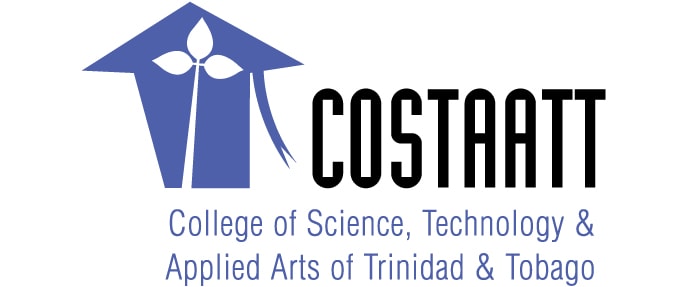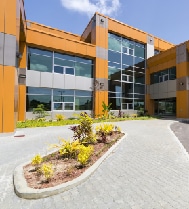1998 – 2002 – The Early Years
During the early years of the College’s history (1998-2002), there was an emphasis on aligning all of the programme offerings to the North American credit-based system to facilitate horizontal transfer among the institutions. In addition, the College worked towards introducing the associate degree with its distinctive general education component to enhance the quality of the existing technical diplomas. This period also saw the introduction of the College Prep programme which catered to students who needed additional support to strengthen their academic foundations in English and Mathematics, in order to pursue tertiary level studies.
When COSTAATT was formally established in 2000, its programmes reflected the full spectrum of a comprehensive community college, including engineering, agriculture, nursing and allied health sciences, business and information technologies, foreign languages, environmental studies, criminal justice, social and behavioural sciences, and the performing arts. Through the College Prep programme, the College had also established a mechanism for the seamless movement from vocational training in the trades to technical/technologist/para-professional training at the associate degree level. This mechanism was critical to empowering the national education system to deliver on one of its primary functions: to facilitate socio-economic mobility for its citizens, a key recommendation of the Ministry of Education’s White Paper (1993-2003).
Although the College had been legally established as a body corporate in October 2000, no Board of Trustees was appointed to govern the College until September 2002. From 2000-2002 therefore, the nascent community college sought to maintain its momentum in an environment of uncertainty. The CCIT, continued its work in planning for the ongoing development of the College, as several studies conducted then reflected the need for the region to significantly expand its capacity to produce graduates at the technician/para-professional /technologist /mid-managerial level to drive economic diversification and development.
2002 – 2004 – Restructuring of The Tertiary Education Sector
In the period following 2002 – early 2004, a new vision for the development of the tertiary education sector in Trinidad and Tobago resulted in the establishment of the University of Trinidad and Tobago (UTT). In support of this initiative, the John S. Donaldson Technical Institute, the San Fernando Technical Institute and the Eastern Caribbean Institute of Agriculture and Forestry (ECIAF) were transferred from COSTAATT to the UTT. The Metal Industries Company Limited (MIC) was not absorbed by either COSTAATT or UTT and therefore operated independently, and the Government Vocational Centre (GVC) was placed under the jurisdiction of MIC.
COSTAATT was left with a reduced range of programme offerings, drawn from the six NIHERST teaching colleges (Information Technology College, College of Nursing, College of Health Sciences, School of Languages, Business Management and General Education Divisions) and the Joint Services Staff College.
2004 to 2008 – Additional Sector Reforms
During the mid-2000’s two other major reforms came into effect. The first was the implementation of the Government Assistance for Tuition Expenses (GATE) programme, a student tuition fee grant, which was intended to remove the financial barriers to accessing post-secondary and university education in Trinidad and Tobago. The second was the establishment of the Accreditation Council of Trinidad and Tobago (ACTT) as the principal authority with responsibility for regulating the operations of all post-secondary and tertiary education institutions operating in Trinidad and Tobago. The National Training Agency (NTA) which was established in 1999 retained responsibility for quality assurance of the technical-vocational education and training (TVET) institutions. Arguably, by 2005, the national tertiary education system had become more diverse as a result of these developments, but the goals of efficiency, relevance and seamlessness were still to be attained.
Despite these institutional and sectoral changes, COSTAATT never lost sight of the critical importance of its role as the national community college and forged ahead with its developmental plans, all the more so, because with the absorption of the technical institutes into UTT, the College had lost most of its physical plant and was constrained to manage its growth and development in leased facilities constructed for commercial and not educational purposes.
2008 – 2012 – A Period of Growth and Expansion
During the 2008 to 2012 period, fueled by the ready availability of GATE funding, the College experienced rapid growth – moving from programme offerings of five bachelor’s degrees and thirteen associate degrees to forty-two bachelor degrees and thirty-one associate degrees by 2012. The student population doubled from 5,039 in September 2008 to 11,631 in September 2011. In addition, in 2009, the College introduced its signature Compensatory Programmes and Academic Support Services (COMPASS) programme which, building on the original College Prep courses, offered a wider range of developmental education courses and student support services, to meet the needs of academically underprepared students who nevertheless demonstrated both the desire and the capacity, to successfully pursue tertiary level studies.
Another notable achievement of the College during this period was its attainment of institutional accreditation status from the ACTT in October 2010 – making it the first institution in the country to achieve this status. This was followed in 2011 with recognition for the College’s Quality Management System (QMS) by ACTT at the inaugural Quality in Tertiary Education (QuiTE) Awards ceremony.
The rapid growth in student demand and enrolment outpaced the College’s physical and human resources and in 2012, the Board and management embarked on a period of review of COSTAATT’s programme offerings and academic policies with a view to strengthening its quality management capacity. Significantly, in 2011, Government approved funding for the construction of COSTAATT’s first ever purpose-built campus on a 30-acre parcel of state lands in Chaguanas.


